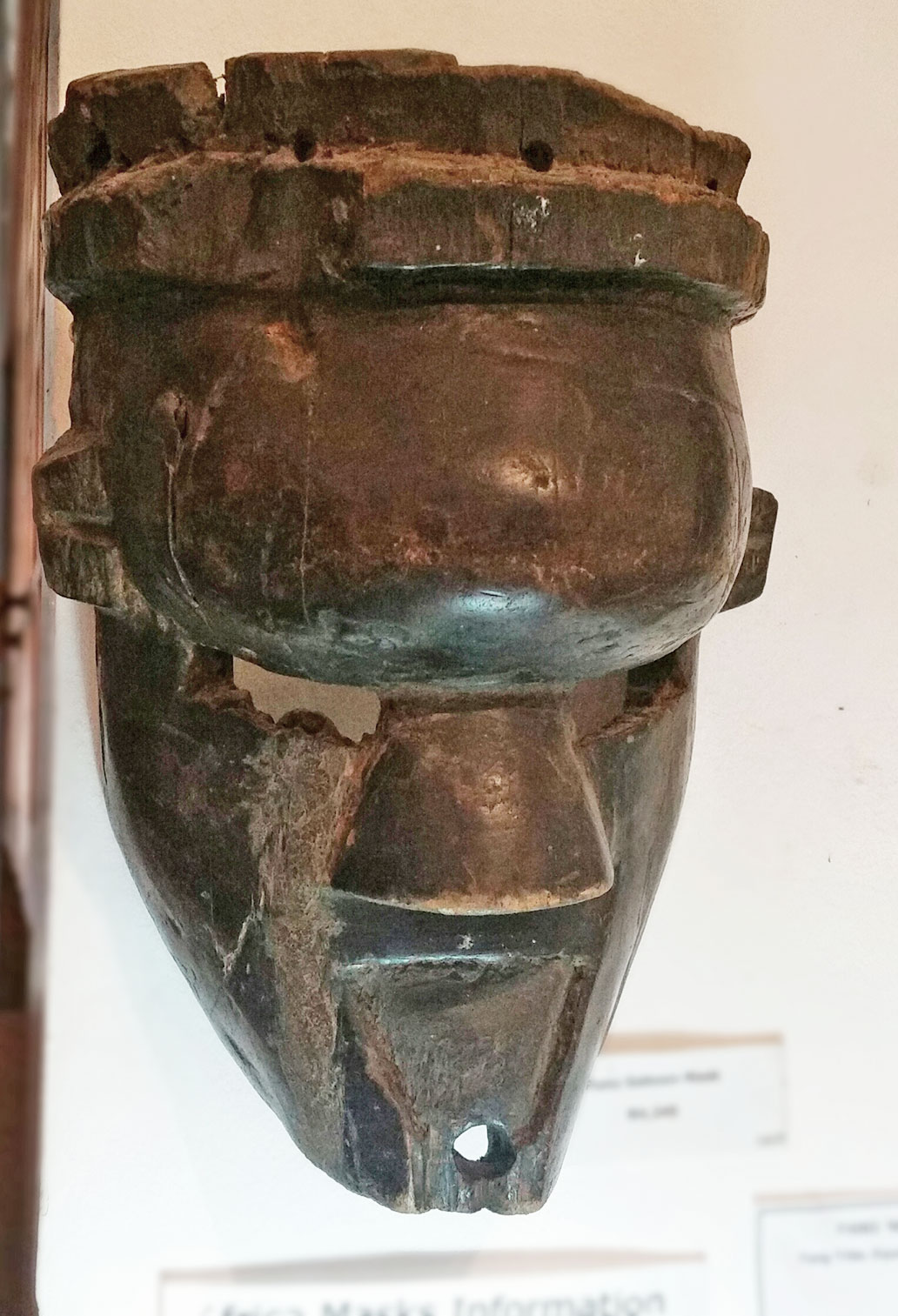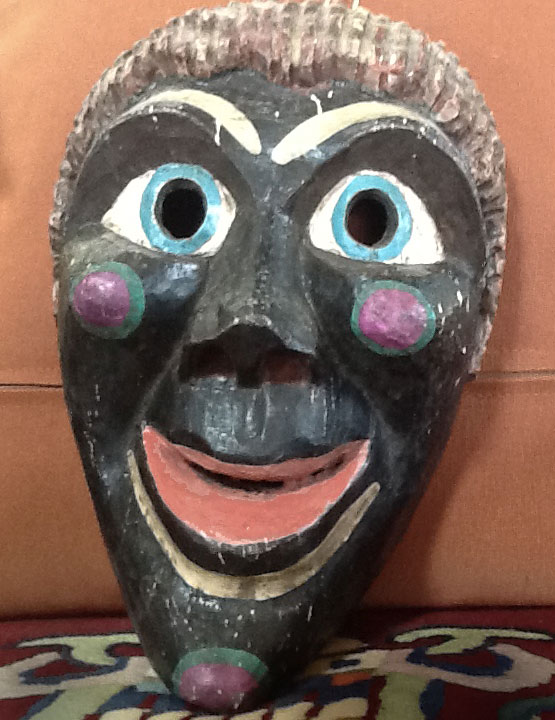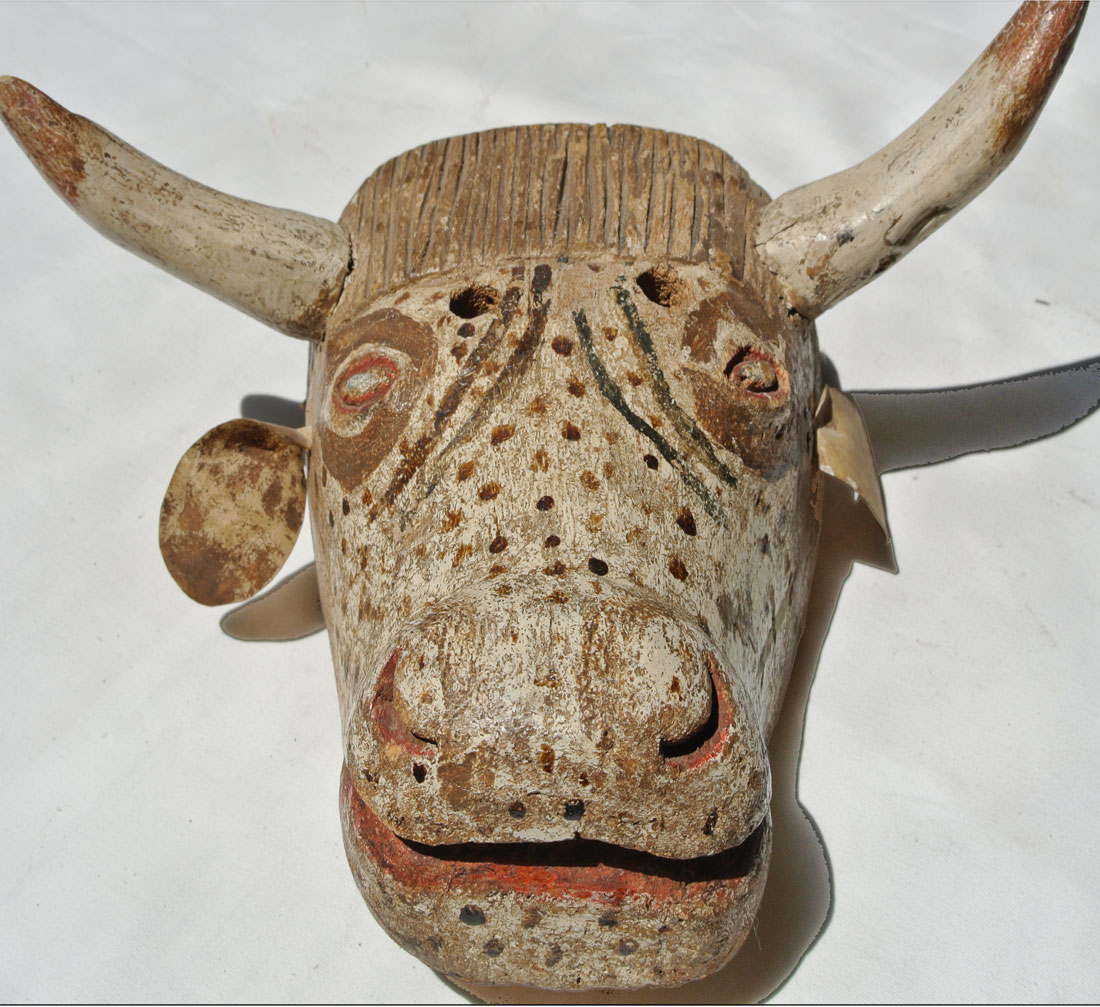 Q: I am inquiring on behalf of the owner of an art gallery in South Africa who has this mask in their collection. It was acquired from an informal trader. Not sure of price, but not more than a few hundred. Any info welcome. I only have one photo. Leigh, 1432 Q: I am inquiring on behalf of the owner of an art gallery in South Africa who has this mask in their collection. It was acquired from an informal trader. Not sure of price, but not more than a few hundred. Any info welcome. I only have one photo. Leigh, 1432
A: This looks like an old wooden mask from the Salampasu people who live in south-central Democratic Republic of Congo. Similar masks are often covered with small sections of sheet metal. This could be an old, used mask of considerable value, but without front, side and rear views at higher resolution, I can’t tell. I have seen many of these strange human-like faces and almost all of them were reproductions, which are worth much less.
The 60,000 Salampasu people live east of the Kasai River, on the frontier between the Democratic Republic of the Congo and Angola. Their name is said to mean “hunters of locusts”, but they were widely viewed with terror by adjacent groups. They maintain strong commercial and cultural relations with their southern neighbors, the Chokwe and the Lunda to whom they pay tribute. The Salampasu are homogeneous people governed by territorial chiefs, who supervise village chiefs. Their hierarchical power structure is counterbalanced by a warriors’ society. A people with a reputation as fearless warriors, the Salampasu have retained the custom of a rough and primitive life. Warring and hunting are privileged occupations, but the women do some farming.
Salampasu masks were integral part of the warriors’ society whose primary task was to protect this small enclave against invasions by outside kingdoms. Boys were initiated into the warriors’ society through a circumcision camp, and then rose through its ranks by gaining access to a hierarchy of masks. Earning the right to wear a mask involved performing specific deeds and large payments of livestock, drink and other material goods. Once a man ‘owned’ the mask, other ‘owners’ taught this new member particular esoteric knowledge associated with it. The Salampasu use masks made from wood, crocheted raffia, and wood covered with sheets of copper. Famous Salampasu masks made for initiation purposes are characterized by a bulging forehead, slanted eyes, a triangular nose and a rectangular mouth displaying intimidating set of teeth. The heads are often covered with bamboo or raffia or rattan-like decorations. Presented in a progressive order to future initiates, they symbolize the three levels of the society: hunters, warriors, and the chief.
Certain masks provoke such terror that women and children flee the village when they hear the mask’s name pronounced for fear they will die on the spot. Wooden masks covered or not covered with copper sheets are worn by members of the ibuku warrior association who have killed in battle. The masks made of plaited raffia fiber are used by the idangani association. Throughout the southern savannah region copper was a prerogative of leadership, used to legitimize a person’s or a group’s control of the majority of the people. Possessing many masks indicated not only wealth but also knowledge. Filing teeth making part of many wooden masks was part of the initiation process for both boys and girls designed to demonstrate the novices’ strength and discipline. Salampasu masquerades were held in wooden enclosures decorated with anthropomorphic figures carved in relief. The costume, composed of animal skins, feathers, and fibers, is as important as the mask itself. It has been sacralized, and the spirit dwells within it. Masks are still being danced as part of male circumcision ceremonies.
|
|
|


 This is a South American mask
This is a South American mask
 Haitian masks of wood, metal
Haitian masks of wood, metal